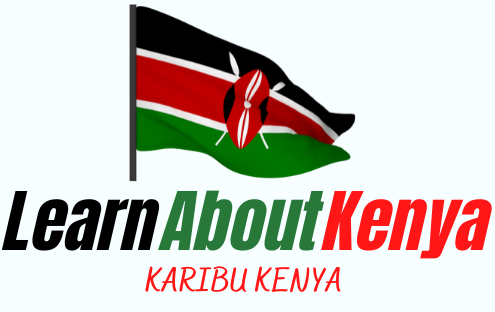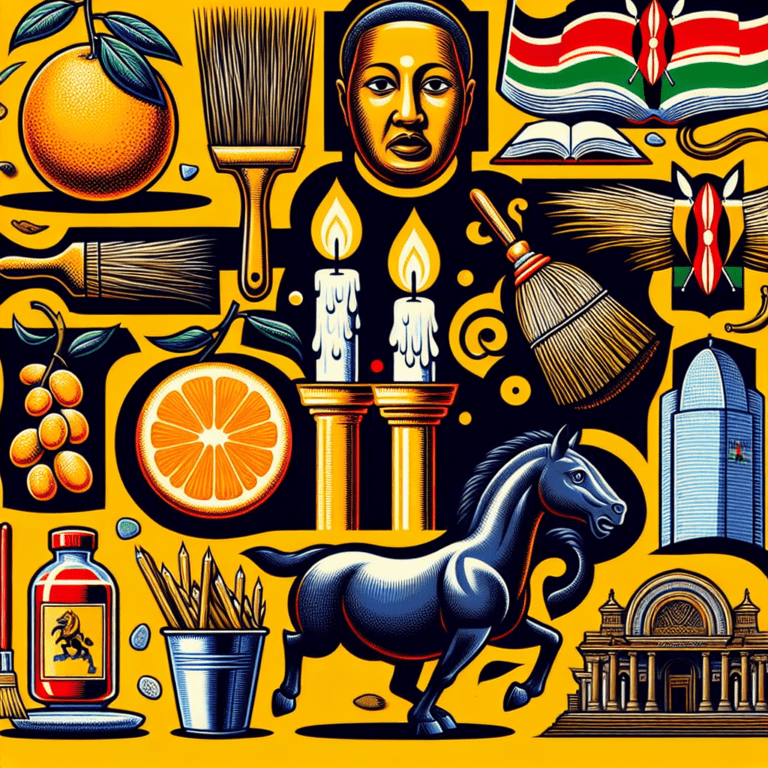What Is The Great Rift Valley, And Where Is It Located In Kenya?
Imagine standing on the edge of a breathtaking landscape, stretching endlessly into the horizon. Picture yourself surrounded by deep, dramatic cliffs, awe-inspiring volcanoes, and crystal-clear lakes. This is the Great Rift Valley, a geological wonder that spans across Kenya. The Great Rift Valley is a magnificent trench that has been formed by the shifting of tectonic plates over millions of years. It is not only a geological phenomenon but also a place of immense beauty and natural diversity, with a fascinating history waiting to be explored. Let’s embark on a journey to discover the wonders of the Great Rift Valley in Kenya.
What is the Great Rift Valley
The Great Rift Valley is a vast geographical and geological feature that stretches across East Africa. It is a series of interconnected rifts, or cracks, in the Earth’s crust that have created a unique and diverse landscape. The Rift Valley extends for thousands of kilometers, from Mozambique in the south to Syria in the north. It is known for its stunning scenery, abundant wildlife, and rich cultural heritage.
Definition and Formation of the Great Rift Valley
The Great Rift Valley is a result of the tectonic activity in the Earth’s crust. It is formed by the movement of several tectonic plates that are part of the larger East African Rift System. The rifts occur where the Earth’s crust is being pulled apart, creating deep troughs and steep cliffs. Over millions of years, the movements of the tectonic plates have shaped the landscape we see today.
Diverse Geography of the Great Rift Valley
The Great Rift Valley is characterized by its diverse geography, which includes highlands, valleys, lakes, and volcanic features. It is home to numerous lakes, rivers, and mountains, making it one of the most unique and geologically intriguing regions on Earth. The landscape ranges from lush forests and fertile farmland to arid deserts and volcanic craters. This diverse geography provides a home to a wide array of plant and animal species.
Location of the Great Rift Valley in Kenya
Kenya, a country in East Africa, is fortunate to have a significant portion of the Great Rift Valley within its borders.
Overview of Kenya’s Geography
Kenya is known for its diverse and stunning geography. It is located on the eastern coast of Africa and is bordered by the Indian Ocean to the southeast. The country is home to a wide range of landscapes, including mountains, valleys, savannahs, and coastal plains. Its geographic location and varied terrain make Kenya a popular destination for tourists and nature enthusiasts.
Extent and Shape of the Great Rift Valley in Kenya
The Great Rift Valley in Kenya is an impressive geological feature that extends for approximately 600 kilometers from north to south. It splits the country into two parts, with the highlands to the west and the lowlands to the east. The valley’s shape is characterized by steep cliffs, volcanic craters, and numerous lakes. This unique landscape has played a significant role in shaping Kenya’s culture, economy, and natural environment.
Important Features of the Kenyan Rift Valley
Within the Kenyan portion of the Great Rift Valley, there are several important features that highlight the region’s natural beauty and geological significance.
Lake Bogoria
Lake Bogoria is a stunning soda lake located in the Rift Valley. It is known for its hot springs, geysers, and an abundance of birdlife. The lake is a designated national reserve and is a favorite spot for nature lovers and birdwatchers.
Lake Baringo
Lake Baringo is another beautiful freshwater lake in the Rift Valley. It is famous for its diverse birdlife, including flamingos, pelicans, and fish eagles. The lake is also a popular fishing spot and offers opportunities for boat tours and water-based activities.
Lake Nakuru
Lake Nakuru is one of the most famous lakes in the Rift Valley. It is a soda lake renowned for its huge flocks of flamingos that gather on its shores. The lake is also home to a national park, which protects a variety of wildlife, including rhinos, lions, and giraffes.
Hell’s Gate National Park
Hell’s Gate National Park is a unique destination within the Kenyan Rift Valley. It is known for its towering cliffs, deep gorges, and hot springs. Visitors can explore the park on foot or by bike, getting up close with the dramatic landscapes and encountering wildlife such as zebras, giraffes, and buffaloes.
Mount Longonot
Mount Longonot is a dormant stratovolcano located in the Rift Valley. It offers an adventurous hiking experience for those seeking stunning views and a challenging climb. The crater at the peak of the mountain provides a breathtaking panorama of the surrounding landscapes.
Lake Naivasha
Lake Naivasha is a freshwater lake surrounded by lush vegetation and stunning wildlife. It is a popular tourist destination for boat safaris, birdwatching, and exploring the nearby Crescent Island Wildlife Sanctuary. The lake is home to a variety of birds, hippos, and even a population of elusive and endangered Rothschild’s giraffes.
The Wildlife of the Kenyan Rift Valley
The Kenyan Rift Valley is teeming with a rich array of wildlife, both within the lakes and in the surrounding ecosystems.
Rich Biodiversity of the Great Rift Valley
The Great Rift Valley is a biodiversity hotspot, hosting a diverse range of flora and fauna. The lakes within the Rift Valley are home to a myriad of bird species, including pink flamingos, pelicans, and cormorants. The surrounding savannahs and forests provide a habitat for iconic African wildlife such as lions, elephants, zebras, and giraffes. The region’s unique geological features have created a variety of ecosystems, which support a wide range of plant and animal life.
National Parks and Game Reserves in the Rift Valley
The Kenyan Rift Valley is home to several national parks and game reserves that protect and preserve the region’s wildlife. These include Lake Nakuru National Park, Hell’s Gate National Park, and Maasai Mara National Reserve, among others. These protected areas offer visitors the opportunity to observe and appreciate the diverse wildlife that thrives in this part of Kenya.
Human Presence in the Kenyan Rift Valley
The Rift Valley in Kenya has a rich cultural heritage and is inhabited by various communities.
Traditional Communities and Cultures
The Kenyan Rift Valley is home to several indigenous communities, each with its own unique culture and traditions. The Maasai, Samburu, and Pokot are among the ethnic groups that have long called this region home. These communities have adapted to the challenging environments of the Rift Valley and have preserved their distinctive cultures, including their vibrant music, dances, and colorful attire.
Ethnic Diversity in the Rift Valley
The Rift Valley is known for its ethnic diversity, with people from various backgrounds and tribes living and working in the region. The cultural mix adds richness to the local communities and contributes to the vibrant atmosphere of the Rift Valley. The interactions between different ethnic groups have shaped the history, traditions, and social fabric of the region.
The Importance of the Great Rift Valley in Kenya
The Great Rift Valley in Kenya holds great significance in several aspects, including tourism, scientific research, and ecological conservation.
Tourism and Economic Development
The Rift Valley has become a major tourist destination in Kenya, attracting visitors from all around the world. Its breathtaking landscapes, abundant wildlife, and cultural attractions make it a must-visit place for nature lovers and adventure seekers. The tourism industry in the Rift Valley contributes significantly to the country’s economy, creating employment opportunities and supporting local businesses.
Scientific Significance
The geological and ecological features of the Great Rift Valley make it a haven for scientific research. The region’s volcanic activity, diverse ecosystems, and unique geological formations attract researchers from various disciplines, including geology, biology, and anthropology. Scientists study the Rift Valley to gain insights into Earth’s history, biodiversity, and the processes that have shaped our planet over millions of years.
Ecological Importance
The Kenyan Rift Valley is not only a crucial habitat for a wide range of wildlife but also plays a vital role in preserving ecological balance. The lakes in the Rift Valley provide water for local communities and support agriculture. Additionally, the region’s forests help regulate the climate, prevent soil erosion, and support a variety of plant and animal species. Protecting the Rift Valley’s ecosystems is essential for maintaining biodiversity, ensuring water security, and mitigating the impacts of climate change.
In conclusion, the Great Rift Valley in Kenya is a remarkable and diverse region that captivates visitors with its stunning landscapes, abundant wildlife, and rich cultural heritage. From the picturesque lakes and towering cliffs to the unique flora and fauna, the Rift Valley offers a glimpse into the fascinating natural and cultural wonders of Kenya. With its importance in tourism, scientific research, and ecological conservation, the Great Rift Valley continues to be a treasure worth exploring and protecting for generations to come.







